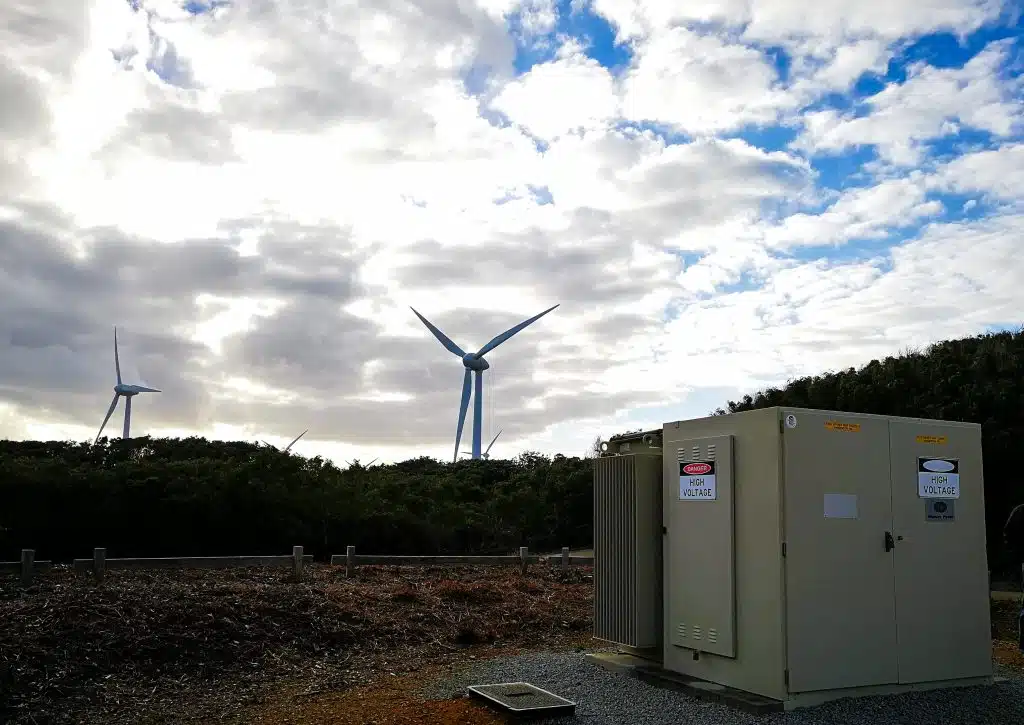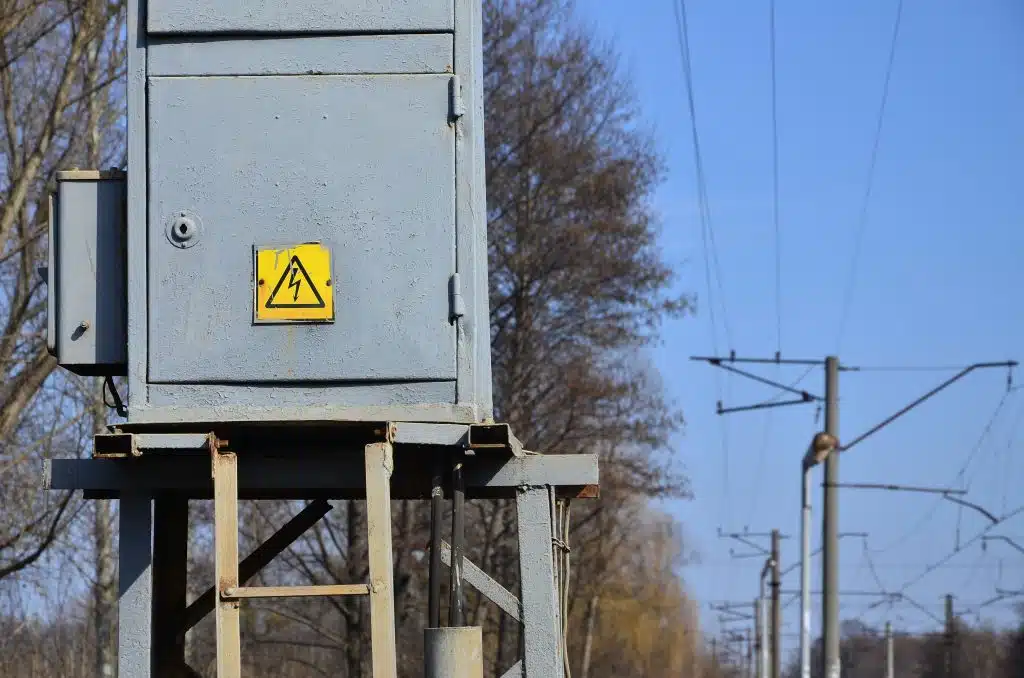

A fire anywhere is a major cause for concern, but electrical transformer fires can be an especially large risk. That’s why there are fire suppression systems available, designed to cope with the challenges associated with fire protection in these important and high-risk pieces of equipment. Today we’ll discuss:
A transformer fire is a blaze that occurs within and around a transformer. A transformer is a piece of equipment that moves electric energy from one AC circuit to another (or multiple others) while changing its voltage. Transformers are an integral part of our infrastructure, and have been used since the 1890’s as part of our modern electrical grid.
The two main purposes that transformers are used for are to:
Additionally, there are two factors that make transformer fires more likely to occur, and more dangerous when they do. The first factor is the high volume of electrical energy passing through a transformer, which generates a substantial amount of heat. The second is that many transformers utilize flammable mineral oil as an insulation and cooling fluid.
Transformers, with their known fire risks, have been very carefully engineered and regulated to reduce the danger of fire as much as possible. But accidents, mechanical failure, and electrical overload do still cause a number of transformer fires each year. According to T&D World:
“The average probability of a serious transformer fire is on the order of 0.06% to 0.1% per service year, or one fire per 1,000 to 1,500 transformer service years. In practice, this means 2.4% to 4% of all transformers can be expected to cause a fire during a 40-year service life.”
The likelihood of and causes for a transformer fire varies considerably by the type and size of the transformer. Transformer age, design, operating environment, and maintenance history will also impact fire risk.

In general, the most common transformer fire causes are:
Regardless of what causes transformers to spark and catch fire, there is an additional risk of transformer explosion during electrical fires. This is especially true of transformers that use mineral oil as an insulator and coolant. The mineral oil can quickly ignite and explode under certain conditions. This includes when a spark is present (as in a lighting strike or internal arcing) or when the mineral oil is overheated past the point of spontaneous combustion.
Alternatively, dry-type transformers are often used as a safer option for medium- and low-voltage needs (under 2.5-3 megavolt-amperes), especially for use indoors. Their biggest advantage is increased safety due to the lower fire and explosion risk. As their name implies, these transformers do not use oil to dissipate heat, but incorporate dry or gaseous mediums into the cooling coils instead.

There are three main varieties of dry-type transformers:
Dry-type transformers have advantages outside of simply decreasing fire and explosion risk, such as:
They do come with some disadvantages as well, however. These include:
Under ideal circumstances, we would proactively stop transformer fires before they started. But despite best practices, fires do occasionally occur. When a fire does occur, fire suppression systems help to contain and suppress the fire as safely and efficiently as possible.
There are a variety of suppressant delivery systems that can be used to control or extinguish transformer fires. Water is the most common fire suppressing medium in general, but it is not always the most ideal for an electrical fire, especially in areas with other sensitive electrical equipment.
Types of water-based fire protection systems include:
Types of non-water-based fire protection systems recommended for transformers:
The National Fire Protection Association (NFPA) develops codes and standards for fire safety using experts with a wide range of professional expertise. Their requirements are used by many specific organizations and authorities having jurisdiction, so they are legally enforceable in many cases in the United States.
NFPA 850, Recommended Practice for Fire Protection for Electric Generating Plants and High Voltage Direct Current Converter Stations, specifically deals with transformer fire protection standards. It includes recommendations for transformers located both indoors and outdoors.

It’s clear that having an effective, reliable system in place is needed to protect human life and any property that is nearby when a fire occurs. Two well-performing options include an indirect high-pressure and/or engineered system. The specific benefits these options can provide include:
As OSTİM Defense and Aerospace Cluster (OSSA), we held a cooperation meeting with the Ministry of National Defense General Directorate of Technical Services. The opening remarks were delivered by OSSA Chairman of the Board, Mr. İbrahim Yarsan; ASFAT General Manager, Prof. Dr. Mustafa İlbaş; and Major General Ercan Eroğlu, General Director of Technical Services at the Ministry of National Defense. Following the opening session, experts from the Ministry of National Defense delivered informative presentations on “Introduction to MoD Military Factories” and “MoD Facility Security Clearance / Production Permit Certificate Processes.” As Nero Industry, we had the opportunity to present our products and capabilities to the MoD delegation and engage in bilateral cooperation meetings throughout the program.
*Legal Notice and Intellectual Property Disclaimer:
The entire content of this website including but not limited to all textual content, graphics, logos, images, photographs, illustrations, technical and scientific drawings, audio and video clips, animations, audiovisual recordings, software, source code, databases, design elements, user interface components, and all other technical and creative materials, together with all associated intellectual and industrial property rights is the sole and exclusive property of NERO Industries Defense Inc. or its duly authorized licensors. Such content is protected under the applicable laws and regulations of the Republic of Turkey, including but not limited to the Law on Intellectual and Artistic Works (Law No. 5846), the Turkish Commercial Code, the Turkish Penal Code, as well as all relevant international treaties and conventions to which the Republic of Turkey is a party, including but not limited to the Berne Convention for the Protection of Literary and Artistic Works, the Paris Convention for the Protection of Industrial Property, the TRIPS Agreement, the WIPO Copyright Treaty, and relevant European Union Directives and Regulations, whether currently in force or entering into force in the future. Unless expressly authorized in writing by NERO Industries Defense Inc., any reproduction, modification, transmission, dissemination, republication, uploading to other platforms, storage, public display or performance, commercial exploitation, or any other form of unauthorized use, whether in whole or in part, directly or indirectly, verbatim or in altered form, of the above-mentioned materials is strictly prohibited. Furthermore, any facilitation, encouragement, or promotion of such unauthorized acts is equally prohibited. Any infringement of these rights may constitute a violation of intellectual property and/or unfair competition laws and may result in civil and/or criminal liability under applicable national and international legal frameworks.
Nero Industries develops fire suppression systems, CBRN, laser warning systems, smoke launchers and military generators as one of Turkey’s leading defense industry manufacturers.
NCAGE CODE: T9830